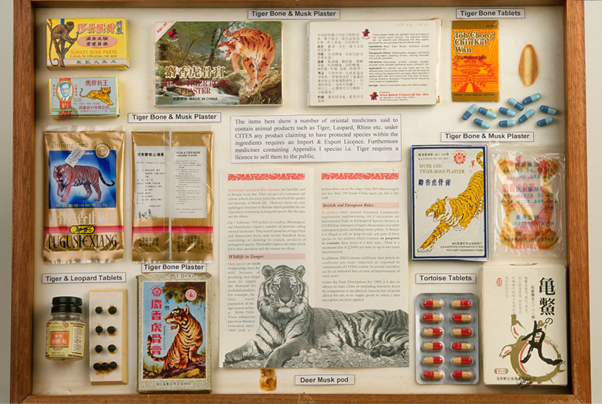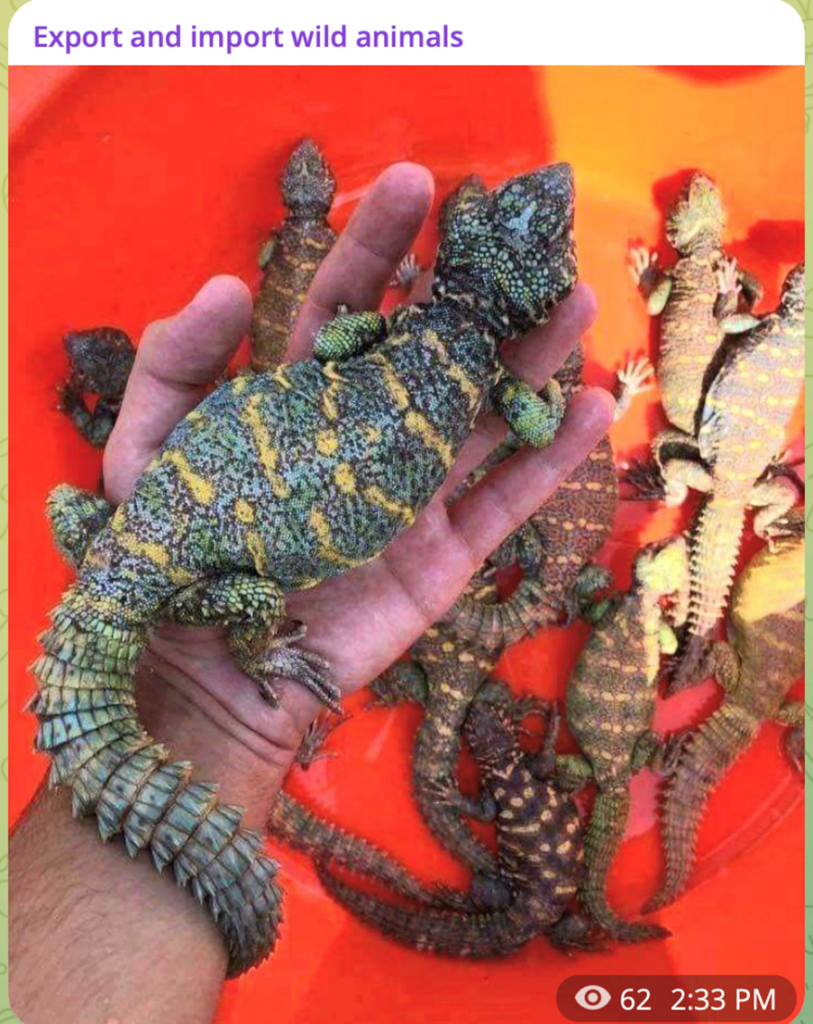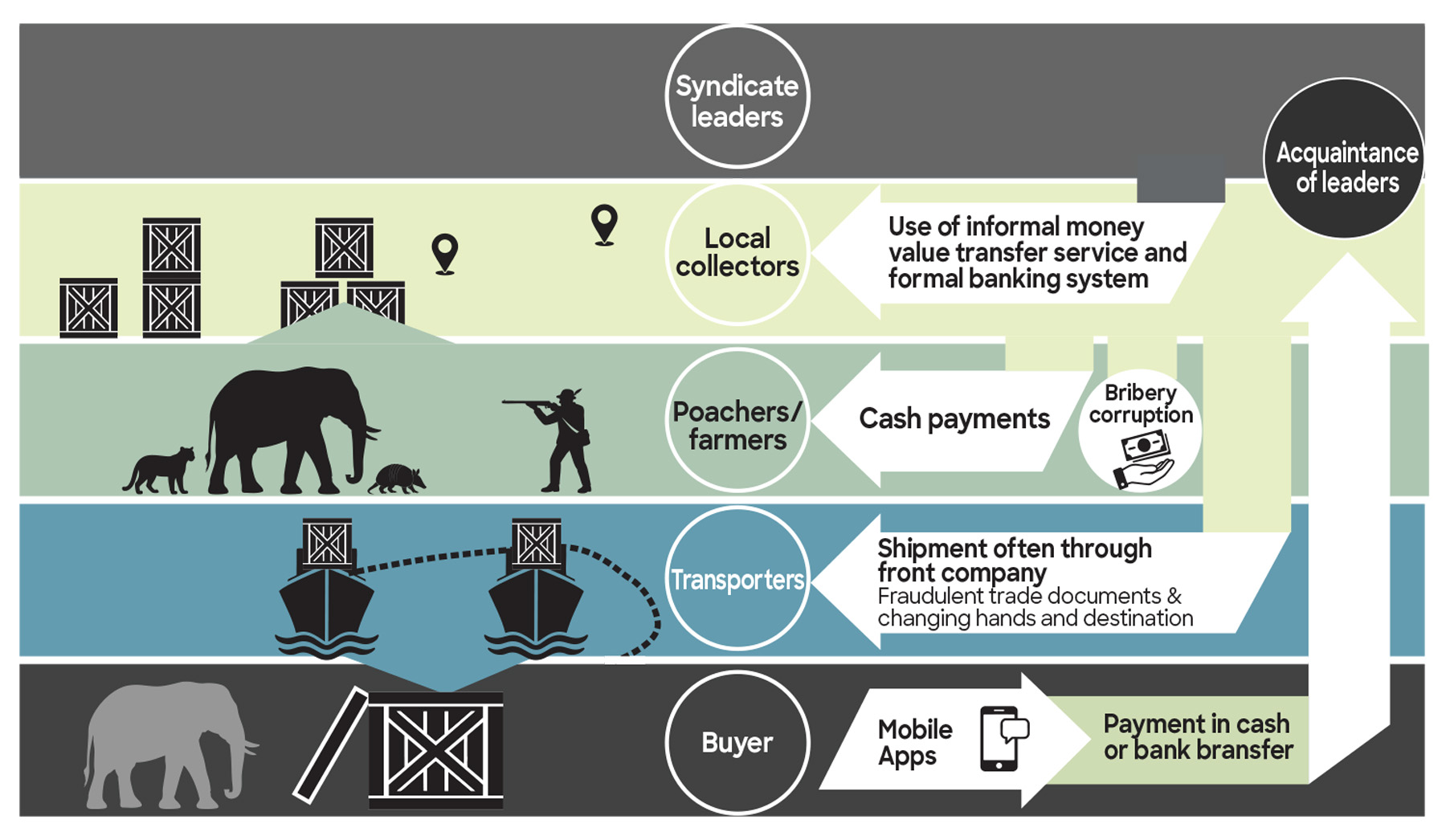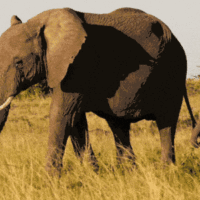
In 1900, a group of European colonial powers signed the world’s first multilateral treaty on wildlife preservation at the Convention for the Preservation of Wild Animals, Birds and Fish in Africa.1 Numerous treaties, protocols and agreements have been signed in the last century. While every treaty aims to honor the fundamental international law principle of pacta sunt servanda (agreements must be kept), our collective efforts to combat wildlife crime have proven to be largely ineffective.
The United Nations (UN) has called on the global community to collectively prioritize sustainable development goals target 12 (ensuring sustainable consumption and production patterns), target 15 (protecting terrestrial ecosystems and halting biodiversity loss) and target 17 (promoting prosperity while protecting the planet) to take significant strides toward ending wildlife trafficking while fostering a more sustainable future for both people and the planet.
The Current Landscape
The global wildlife trade is a vast, multibillion-dollar industry, with Western countries playing a significant role as transit and destination countries. As per trade data compiled by the U.S. Department of Justice’s Office of Justice Programs, over the past two decades the U.S. has imported approximately 2.9 billion animals from nearly 30,000 species.2 While there are no national databases like the Law Enforcement Management Information System in most importing countries, numerous studies indicate that unregulated trade of endangered species has gone rampant in many parts of the world including Australia,3 North America4 and Europe.5
Many species targeted by illegal trade and impacted by habitat loss are now at risk of extinction. Iconic animals such as elephants and rhinos face dire survival challenges due to wildlife trafficking.6
Graphic 1: Rhino Poaching in Africa
Source: International Rhino Foundation7
“The 586 rhinos lost in 2023 represent about 2.5% of the African rhino population that year, or one rhino killed every 15 hours,” according to the International Rhino Foundation.8 Graphic 1 above illustrates the number of rhinos poached throughout Africa between 2006 and June of 2024.
Social and Cultural Values
Improved economic conditions in markets such as China and other parts of East and Southeast Asia are fueling an increased demand for rhino horn, elephant ivory and other wildlife products that are considered to be a powerful traditional medicine used to treat a variety of ailments. While there is little or no scientific evidence to support these claims, the dramatic rise in poaching to satisfy this demand is pushing rhinos toward the brink of extinction.
Asian medicines tend to contain animal products such as tiger, leopard, rhino, etc.
Source: Edward Parker/WWF9
Luxury Fashion
Although the primary markets are based in Asia, the West continues to play a role as a consumer of illegally traded wildlife and must be a part of the solution.10
A western consumer, for instance, may be unwittingly exposed to illegal trade of endangered species. An online investigation led by the Associated Press identified more than 30 retailers selling elephant leather products in the U.S.—mainly exotic boots. Their ads promote virility—“Just a hard-working, tough as nails, pair of American made cowboy boots.”11 Many fashion conglomerates claim to source fur, feathers and skins from factory farms that raise exotic species and legally trade captive-bred endangered species that are illegal to source from the wild. However, the absence of strong regulatory measures and standardized compliance practices allow for illegally obtained skins to be passed off as legal.12
Exotic Pets
An estimated 20,000 big cats (such as lions, tigers and cougars) are privately owned across the U.S. Many are acquired as cubs for entertainment and flaunted by their owners in photo ops. However, once they grow too large to handle, these animals frequently end up in the exotic pet trade, illegal wildlife markets or overwhelmed sanctuaries struggling with limited resources. Many live in cramped, unsuitable environments, leading to health issues and aggressive behavior. Tragically, there have been multiple human injuries and fatalities due to encounters with captive big cats.13
Intersectionality of Organized Crimes
Traffickers operate through sophisticated networks, exploiting weak governance and corrupt officials to transport ivory and rhino horns from remote areas to markets and ports. These smuggling networks frequently overlap with those trafficking other illegal commodities, such as drugs and weapons, further compounding regional instability.14 Wildlife crimes often intersect with other offenses such as drug trafficking, human trafficking, deforestation, money laundering and corruption at the highest level. We may be unwittingly enriching transnational criminals by demanding goods sourced from illegal trade of wildlife and forestry. Here is how anti-financial crime (AFC) professionals could become a part of the solution:
- Study supply chains. You might be consuming goods such as belts, wallets, boots and purses made with leather sourced from poached snakes, lizards, alligators, crocodiles and other reptiles.15
- Review Forest Stewardship Council16 certifications when buying wood products. You may be buying products made with endangered forestry materials such as rosewood or timber. Other biotrade certifications to look for are the Union for Ethical Biotrade17 and the Wildlife Friendly Enterprise Network.18
- Say no to exotic pets. You may be unwittingly buying reptiles or amphibians at the brink of extinction.19
- Be a conscious tourist. You may be patronizing a zoo or sanctuary with a history of neglecting or abusing animals.20
- Call for a ban on trophy hunting. Online images of trophy hunters reveal hunting violations, including non-permitted hunting of female leopards and illegal hounding.21 Hunting sports may be exacerbating related predicate crimes such as trafficking in persons. For instance, Southeast Asian sex workers have reportedly been used as proxy hunters to smuggle trophy hunting products from African countries with legalized trophy hunting provisions to Asia.22
- Support capacity-building projects in exporting countries. Material and training, as well as legal and diplomatic support could have “a significant impact on the trajectory of the illicit rhino horn and ivory trades” and would also represent a relatively cost-effective way to gain new insights into the behavior of implicated criminal groups and associated trafficking networks.23
- Contribute to investigative journalism. Leverage your open-source investigation skills to bolster investigations or financially support nonprofits focused on dismantling wildlife crime syndicates such as the Environmental Investigation Agency24 and Earth League International25
Source: Image from author conducting an open-source investigation on Telegram
Image from author conducting an open-source investigation on Facebook
Graphic 2: Example of Illegal Wildlife Trade Supply Chain and Payments
Source and visualization by: Financial Action Task Force26
Moral Equivocation in Wildlife Trafficking Deterrence
Wildlife trafficking is a global crisis with devastating ecological, economic and ethical consequences (as shown in Graphic 2 above). Yet, efforts to combat it often suffer from moral equivocation: a reluctance to take clear, uncompromising stances against trafficking due to social, economic, cultural or political considerations. This hesitation undermines enforcement, perpetuates demand and threatens endangered species already on the brink of extinction. This is why AFC professionals should take a personal stance against this crime, make conscious consumer choices and contribute to UN Sustainable Development Goals target 12 (ensuring sustainable consumption and production patterns), target 15 (protecting terrestrial ecosystems and halting biodiversity loss) and target 17 (promoting prosperity while protecting the planet).27
Jinisha Bhatt, CAMS, founder, Canada Anti-Human Trafficking Consortium, independent compliance consultant, connect@fighthumantrafficking.ca, ![]()
- “An Introduction to the African Convention on the Conservation of Nature and Natural Resources,” The World Conservation Union (IUCN), 2004, https://www.sprep.org/attachments/Legal/IUCNApia.pdf
- Kiley Price, “The U.S. Imported Billions of Animals in Recent Decades, Fueling Global Wildlife Trade,” Inside Climate News, February 14, 2025, https://insideclimatenews.org/news/14022025/todays-climate-global-wildlife-trade-united-states/
- Sebastian Chekunov, Oliver Stringham, Adam Toomes, et al., “Scale of unregulated international trade in Australian reptiles and amphibians,” Society for Conservation Biology, September 9, 2024, https://conbio.onlinelibrary.wiley.com/doi/full/10.1111/cobi.14355
- Sarika Khanwilkar, Monique Sosnowski and Sharon Guynup, “Patterns of illegal and legal tiger parts entering the United States over a decade (2003–2012),” Society for Conservation Biology, January 4, 2022, https://conbio.onlinelibrary.wiley.com/doi/10.1111/csp2.622
- “Python skin jackets and elephant leather boots: How wealthy Western nations help drive the global wildlife trade,” Chicago Tribune, June 19, 2020, https://www.chicagotribune.com/2020/06/19/python-skin-jackets-and-elephant-leather-boots-how-wealthy-western-nations-help-drive-the-global-wildlife-trade/
- “The National Strategy for Combating Wildlife Trafficking,” The White House, February 11, 2014, https://obamawhitehouse.archives.gov/sites/default/files/docs/nationalstrategywildlifetrafficking.pdf
- “State of the Rhino,” International Rhino Foundation, 2024, https://rhinos.org/about-rhinos/state-of-the-rhino/
- Ibid.
- “The Illegal Trade of Tigers,” World Wide Fund For Nature (WWF), https://tigers.panda.org/news_and_stories/stories/the_illegal_trade_of_tigers/
- “Oversight Hearing on The Escalating International Wildlife Trafficking Crisis: Ecological, Economic And National Security Issues,” U.S. Fish & Wildlife Service, May 21, 2014, https://www.fws.gov/testimony/oversight-hearing-escalating-international-wildlife-trafficking-crisis-ecological
- “Python skin jackets and elephant leather boots: How wealthy Western nations help drive the global wildlife trade,” Chicago Tribune, June 19, 2020, https://www.chicagotribune.com/2020/06/19/python-skin-jackets-and-elephant-leather-boots-how-wealthy-western-nations-help-drive-the-global-wildlife-trade/
- “Ethical Considerations and Elegance: Elephant Leather Unveiled,” Leather NEO, January 9, 2024, https://www.leatherneo.com/blogs/news-and-stories/ethical-considerations-and-elegance-elephant-leather-unveiled
- “June 18 Deadline for Compliance With Big Cat Public Safety Act,” U.S. Fish & Wildlife Service, April 18, 2023, https://www.fws.gov/press-release/2023-04/big-cat-owners-must-register-june-18
- ”The National Strategy for Combating Wildlife Trafficking,“ The White House, February 11, 2014, https://obamawhitehouse.archives.gov/sites/default/files/docs/nationalstrategywildlifetrafficking.pdf
- “Jenna Dewan Says, ‘Leave Wildlife Out of Your Wardrobe,” People for the Ethical Treatment of Animals (PETA), https://www.peta.org/features/jenna-dewan-tatum-says-leave-wildlife-wardrobe/
- “The future of forests is in our hands,” Forest Stewardship Council, https://fsc.org/en
- “Sourcing with respect for people and biodiversity,” Union for Ethical Biotrade, https://uebt.org/
- “What We Do,” Wildlife Friendly Enterprise Network, https://wildlifefriendly.org/what-we-do/
- Sebastian Chekunov, Oliver Stringham, Adam Toomes, et al., “Scale of unregulated international trade in Australian reptiles and amphibians,” Society for Conservation Biology, September 9, 2024, https://conbio.onlinelibrary.wiley.com/doi/full/10.1111/cobi.14355
- Sade Pullen, “PETA plans to sue Barry R. Kirshner Wildlife Sanctuary over endangered species act violations,” Action News Now, March 18, 2025, https://www.actionnewsnow.com/news/butte-county/peta-plans-to-sue-barry-r-kirshner-wildlife-sanctuary-over-endangered-species-act-violations/article_728b8122-0413-11f0-a9d3-e347134f9983.html
- Jessica R. Muller, Sarah-Anne Jeanetta Selier, Marine Drouilly, et al., “The hunter and the hunted: Using web-sourced imagery to monitor leopard (Panthera pardus pardus) trophy hunting,” Society for Conservation Biology, September 7, 2022, https://conbio.onlinelibrary.wiley.com/doi/10.1111/csp2.12789
- “545:Rachel Nuwer—Inside the Dark World of Wildlife Trafficking,” The Jordan Harbinger Show, August 10, 2021, https://podcasts.apple.com/ca/podcast/545-rachel-nuwer-inside-the-dark-world-of/id1344999619?i=1000531571395
- ”The National Strategy for Combating Wildlife Trafficking,” The White House, February 11, 2014, https://obamawhitehouse.archives.gov/sites/default/files/docs/nationalstrategywildlifetrafficking.pdf
- “Combating money laundering and the illegal wildlife trade,” Environmental Investigation Agency, https://eia-international.org/wildlife/combating-money-laundering/
- “Our Team and Board Members,” Earth League International, https://earthleagueinternational.org/our-team/
- “Money Laundering and the Illegal Wildlife Trade,” Financial Action Task Force, June 2020, https://www.fatf-gafi.org/content/dam/fatf-gafi/reports/Money-laundering-and-illegal-wildlife-trade.pdf
- “Sustainable Development Goals,” United Nations, https://www.un.org/sustainabledevelopment/sustainable-development-goals/














